Effective Methods and Products Used by Pest Control Companies for Roaches
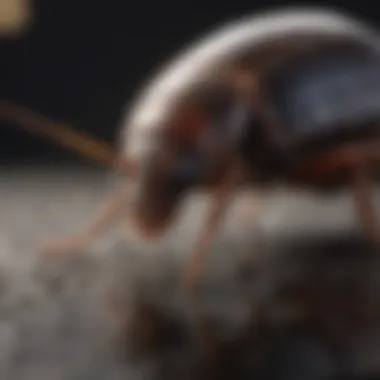
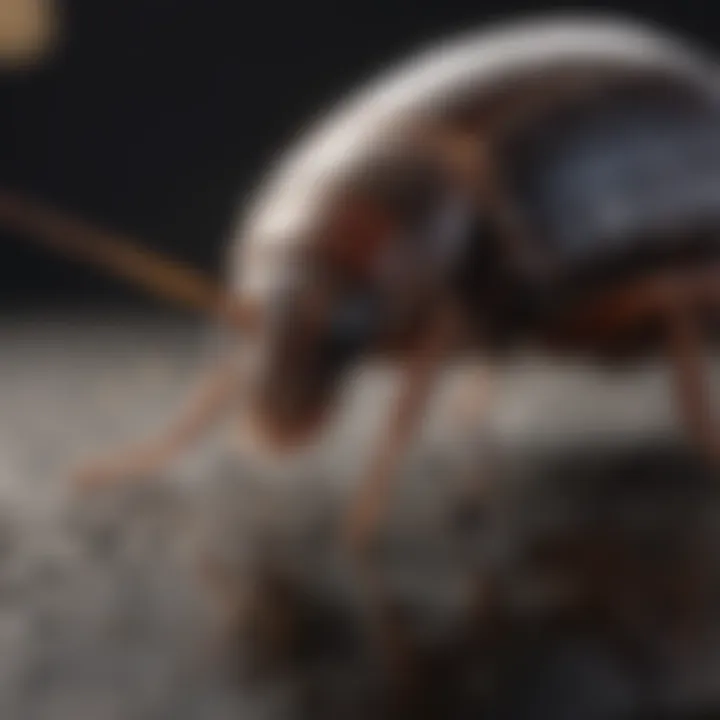
Preventive Pest Control Strategies
When it comes to keeping your home free of roaches and other pesky intruders, preventive pest control strategies play a crucial role. Starting with safeguarding the house exterior, ensure to inspect and seal any visible cracks that could serve as entry points for unwelcome critters. Additionally, clearing debris in outdoor spaces minimizes potential hiding spots for roaches. To fortify your defense against pests, focus on preventing them from entering by implementing measures like installing door sweeps and sealing gaps around windows.
Maintaining a well-kept yard is also essential in the battle against roaches. Establishing regular yard care routines such as mowing the lawn, trimming shrubs, and removing standing water helps eliminate potential roach habitats. Explore effective methods for keeping your yard pest-free, including utilizing natural repellents in outdoor spaces.
Indoor cleanliness is paramount to ward off roaches. Incorporate expert cleaning tips and techniques into your routine to create a pest-resistant indoor environment. By embracing proper sanitation practices and decluttering, you can significantly reduce the likelihood of roach infestations. Additionally, focus on adequate garbage disposal to prevent attracting roaches with potential food sources. Implement efficient waste disposal methods and emphasize the importance of bin maintenance and cleanliness. Explore innovative pest prevention strategies beyond the conventional to safeguard your home comprehensively.
Identifying Pest Risk Areas
To effectively combat roach infestations, identifying pest risk areas within and around your property is critical. Begin with inspecting moisture-prone areas such as crawl spaces, basements, and bathrooms. By identifying damp conditions and addressing them promptly, you can deter roaches attracted to humid environments. Regularly check and seal cracks and crevices in walls, flooring, and foundations to deny roaches easy access to your home. Understand the impact of greenery on pest activity and implement guidelines to maintain a pest-free yard.
Explore additional pest risk areas that may facilitate roach invasions, such as areas with stored firewood or piled debris. By identifying and addressing these vulnerabilities, you can fortify your home's defenses against roaches and other pests. Incorporate preventive measures tailored to the specifics of each risk area to bolster your pest control efforts effectively.
Effective Pest Control Methods
When preventive measures are not sufficient to tackle a roach infestation, turning to effective pest control methods becomes imperative. Discover the power of natural repellents in deterring roaches from infesting your living spaces. These safe and environmentally-friendly solutions often leverage essential oils, herbs, and plants to repel roaches while leaving a pleasant aroma in your home.
In cases requiring more robust intervention, chemical sprays formulated for roach control offer targeted eradication of these resilient pests. Ensure safe usage of professional sprays by following instructions diligently and considering alternative control methods for sensitive environments. Embrace the utility of pest traps as a non-toxic approach to capturing and removing roaches from your home safely. Explore biological control methods that leverage nature's own predators to manage pest populations eco-consciously.
Discover innovative pest control methods that transcend traditional approaches, utilizing the latest technologies and scientific advancements to combat roach infestations effectively.
Pest Species Identification
Understanding the specific pest species invading your home is essential for implementing targeted control strategies. Common home invaders like ants, cockroaches, and spiders exhibit varying behaviors and preferences, necessitating tailored pest management approaches. By recognizing and managing these insects effectively, you can mitigate the risks they pose and prevent infestations.
For rodent infestations, identifying and sealing potential entry points is key to preventing mice and rats from infiltrating your living spaces. Implement proactive measures such as setting up barriers and traps to deter rodent intrusions successfully. Address bird-related issues around your home by implementing deterrents or modifying habitats to discourage problematic bird species from nesting on your property.
Additionally, familiarize yourself with handling wildlife encounters on your property responsibly, respecting the behaviors and habitats of various species. By identifying and managing lesser-known pests effectively, you can maintain a pest-free environment and protect your home and family from potential health hazards.
DIY Pest Control Techniques
Empower yourself with DIY pest control techniques that offer practical and cost-effective solutions for managing roach infestations. Explore homemade pest control remedies using eco-friendly ingredients readily available in your pantry. These simple yet effective solutions help repel roaches without resorting to harsh chemicals, promoting a safer home environment.
Harness the power of essential oils as natural pest repellents, creating a bug-free zone in your living spaces. By diffusing essential oils or incorporating them into cleaning solutions, you can discourage roaches from inhabiting your home. Learn how to set up pest traps and barriers strategically to control and prevent roach infestations, minimizing their impact on your daily life.
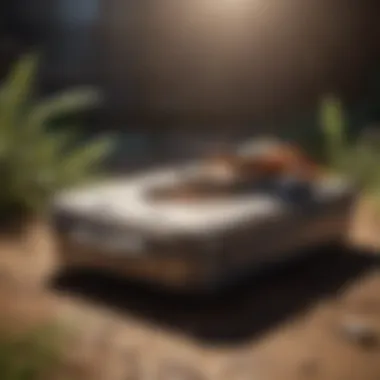

Discover reputable pest control brands offering products designed to tackle roach problems efficiently. Safeguard your home with solutions from trusted brands that prioritize efficacy and safety in pest management. Incorporate unique DIY pest control techniques tailored to specific pest issues you encounter, empowering you to address roach infestations effectively.
Introduction
Pest control companies play a vital role in addressing roach infestations, providing expertise and professional approaches to eliminate these pesky pests effectively. Understanding the methods and products used by these companies is crucial in combating roach problems. This article delves into the strategies employed by professionals in the field, shedding light on the importance of effective roach control.
Understanding the Need for Effective Roach Control
Roach Infestation Concerns
Roach infestations pose significant challenges due to their rapid reproduction rates and ability to spread diseases. The key characteristic of roach infestation concerns lies in the difficulty of eradicating these resilient pests once they proliferate in a property. Pest control companies must employ strategic measures to address roach infestations promptly to prevent further escalation. Despite the challenges they present, roach infestation concerns are a common issue addressed by professionals for its detrimental impact on hygiene and health.
Health Risks Associated with Roaches
The presence of roaches in living spaces poses substantial health risks to individuals, including allergies, asthma triggers, and contamination of food surfaces. Health risks associated with roaches emphasize the importance of swift eradication to safeguard inhabitants from potential health hazards. Pest control companies focus on eliminating roaches not just for property hygiene but also to mitigate health risks effectively. While addressing health risks associated with roaches can be demanding, the ultimate goal is to create a safe and healthy environment free from these disease-carrying pests.
Role of Pest Control Companies
Expertise in Roach Eradication
Pest control companies specialize in roach eradication, utilizing advanced techniques and solutions to combat infestations comprehensively. The key characteristic of their expertise lies in their profound knowledge of roach behavior and effective eradication methods. Professional exterminators can identify roach nesting areas and implement targeted strategies to eliminate these pests efficiently. Clients rely on the expertise of pest control companies to handle roach infestations with precision and expertise, ensuring a thorough eradication process.
Professional Approaches
The professional approaches adopted by pest control companies encompass a range of tailored strategies to address roach infestations effectively. Their key characteristic is the systematic and comprehensive approach to eliminating roaches, considering factors like property layout and client requirements. By customizing treatment plans based on specific needs, pest control companies offer efficient and lasting solutions for roach infestations. While professional approaches require careful planning and execution, they guarantee optimal results in eradicating roaches from residential and commercial spaces.
Methods Used by Pest Control Companies
Pest control companies rely on a range of effective methods to combat roach infestations. Employing these diverse strategies is crucial in ensuring thorough eradication. By delving into the intricacies of these methods, professionals can tackle roach problems efficiently, providing lasting relief to homeowners.
Chemical Treatments
- Sprays and Aerosols: In the realm of chemical treatments, sprays and aerosols play a significant role in eradicating roach populations. Their ability to swiftly target roaches in hard-to-reach areas makes them indispensable tools for pest control companies. The rapid action of sprays and aerosols ensures quick results, bringing relief to homeowners grappling with infestations. However, the pervasive nature of these products may raise concerns about exposure to harsh chemicals.
- Gels and Baits: Equally essential are gels and baits, which lure roaches to consume toxic substances, ultimately leading to their demise. Their targeted approach makes them a preferred choice for many professionals in the industry. Gels and baits are lauded for their effectiveness in eliminating roaches without posing significant risks to humans or pets. Yet, the gradual nature of this method may require patience from homeowners awaiting visible results.
Non-Chemical Solutions
- Traps and Lures: Non-chemical solutions like traps and lures offer a more environmentally friendly approach to roach control. These methods attract roaches using baits or pheromones, leading them to containment devices. While traps and lures are non-toxic to humans, their efficacy may vary depending on roach species and infestation levels. Patience and consistent monitoring are key aspects of employing traps and lures effectively.
- Heat Treatments: A rising trend in pest control, heat treatments involve raising the temperature in infested areas to levels lethal to roaches. This eco-friendly approach targets roaches at all life stages, reducing the likelihood of reinfestation. However, the cost and time investment required for heat treatments may deter some homeowners seeking quick fixes.
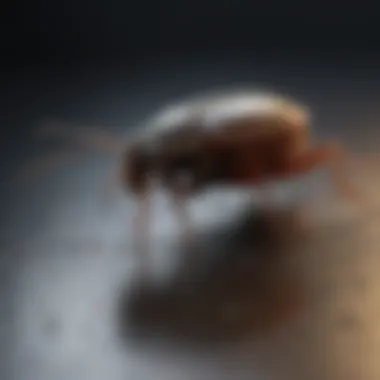
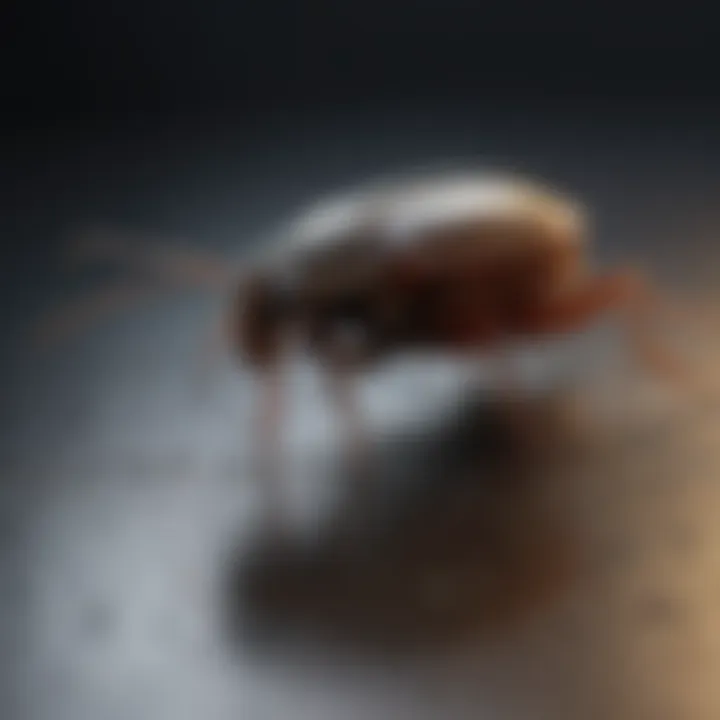
Integrated Pest Management (IPM)
- Combination of Strategies: Integrated Pest Management combines various tactics like sanitation, exclusion, and monitoring to address roach problems comprehensively. By customizing solutions based on specific infestation factors, IPM promotes long-term control and minimizes environmental impact. The versatility of this approach allows for tailored strategies that adapt to evolving pest populations.
- Environmentally-Friendly Approaches: Emphasizing sustainability, environmentally-friendly approaches prioritize natural solutions and preventive measures. Utilizing techniques such as biological control and habitat modification, these methods aim to disrupt the roach lifecycle without harming beneficial insects. While environmentally-friendly approaches align with eco-conscious attitudes, their efficacy may vary based on property-specific factors.
Key Products Utilized
In the realm of pest control companies battling roaches, the utilization of key products stands as a cornerstone in the fight against these resilient pests. Among the arsenal employed by professionals, insecticides, insect growth regulators (IGRs), and rodenticides play pivotal roles in eradicating roaches effectively. These products are formulated after rigorous research and testing to ensure maximum impact on roach populations while minimizing any adverse effects on the environment or human health.
Insecticides
Insecticides constitute a vital category of products wielded by pest control companies to combat roach infestations. Within this category, two main types stand out: residual sprays and dust formulas.
Residual Sprays
Residual sprays are meticulously formulated to linger on surfaces even after application, ensuring a long-lasting barrier against roaches. The key characteristic of residual sprays lies in their ability to exterminate roaches upon contact and provide sustained protection against reinfestation. Pest control experts favor residual sprays for their effectiveness in targeting roaches in hard-to-reach areas, such as crevices and wall voids. While their persistence is a boon for long-term control, vigilance is essential to prevent unintended exposure to pets or children.
Dust Formulas
Dust formulas offer a targeted approach to roach control, delivering insecticide in powder form to areas where roaches thrive. The key feature of dust formulas is their ability to infiltrate roach hideouts, such as voids and crawl spaces, effectively eliminating roaches at their source. Pest control professionals opt for dust formulas for their precision in application and ability to reach inaccessible roach harborage sites. However, care must be taken during application to prevent unnecessary dispersion of the product beyond the target areas.
Insect Growth Regulators (IGRs)
In the quest for long-term roach control, insect growth regulators (IGRs) emerge as a strategic tool in disrupting the reproductive cycle of roaches. This category includes products designed to impede roach development and target their life stages.
Disrupting Roach Development
Disrupting roach development involves inhibiting their growth from egg to adult stage, curbing population expansion effectively. The key characteristic of this approach is its focus on interrupting the maturation process of roaches, preventing them from reproducing and proliferating. Pest control specialists tout the efficacy of disrupting roach development in achieving sustained control over infestations. However, thorough understanding of roach biology is crucial to maximize the impact of IGRs.
Long-Term Impact
The long-term impact of IGRs reverberates through roach populations, altering their reproductive patterns and curtailing infestation cycles. The key feature of this long-lasting effect lies in its ability to create a lasting barrier against roach proliferation, ensuring enduring protection for properties. While IGRs offer a promising solution for persistent roach problems, their sustained use may lead to resistance in roach populations over time, necessitating strategic rotation of products for optimal control.
Rodenticides
In the arsenal of pest control companies, rodenticides provide a targeted solution for eradicating roaches at their nesting grounds, delivering a lethal blow to these troublesome pests. This category includes products engineered to lure roaches into consuming toxic baits in bait stations, ensuring efficient population control.
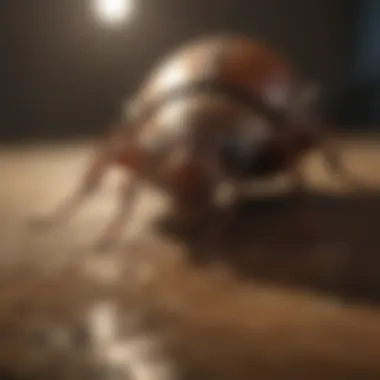
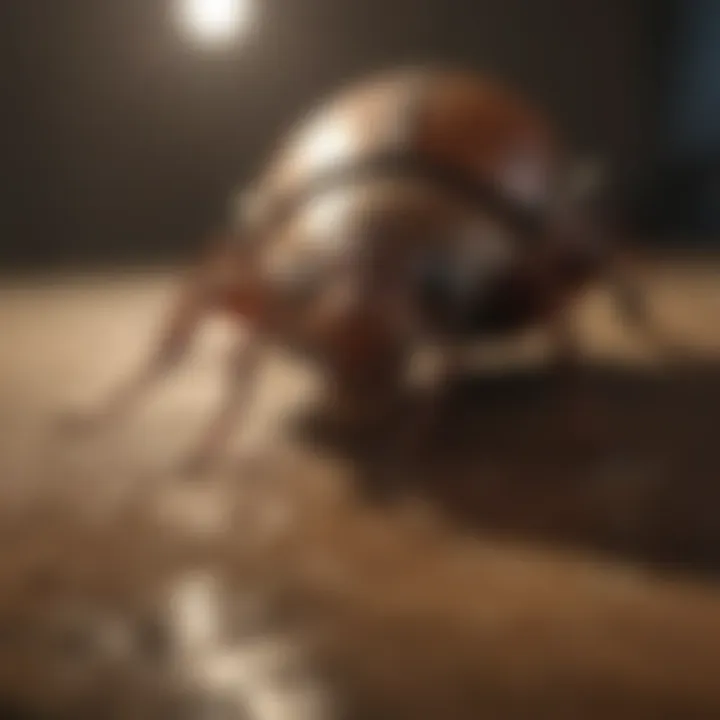
Targeting Roach Nest Areas
Targeting roach nest areas involves strategically placing rodenticides in locations frequented by roaches, such as nesting sites and foraging areas. The key characteristic of this approach is its precision in delivering toxic baits directly to roaches, minimizing exposure to non-target organisms. Pest management professionals advocate for targeting roach nest areas as an effective method to decimate roach populations at their core. However, precautions must be taken to prevent accidental ingestion by pets or children.
Bait Stations
Bait stations act as discreet delivery mechanisms for rodenticides, enticing roaches to feed on poisoned bait concealed within. The unique feature of bait stations lies in their design, which offers roaches easy access to the bait while safeguarding it from unintended contact. Pest control experts rely on bait stations for their efficacy in luring and exterminating roaches without scattering toxins indiscriminately. Nevertheless, strategic placement and regular monitoring of bait stations are crucial to ensure optimal efficacy and minimize risks of secondary poisoning.
This detailed exploration of key products utilized by pest control companies underscores the meticulous approach taken to combat roaches effectively, emphasizing the importance of tailored strategies and risk management in achieving long-term control and safeguarding properties against these resilient pests.
Professional Techniques and Approaches:
In the realm of pest control, the application of professional techniques and approaches stands as a cornerstone of efficacy and precision. Pest control companies rely heavily on these specialized methodologies to address roach infestations comprehensively. By leveraging a nuanced understanding of roach behavior and habitat preferences, professionals can tailor their strategies to maximize effectiveness. These techniques encompass a spectrum of disciplines, from entomology to environmental science, offering a holistic approach to pest management.
Inspection and Assessment:
Identifying Roach Species:
Within the intricate framework of pest control, the identification of roach species assumes paramount significance. By pinpointing the exact species infiltrating a property, pest control experts can devise targeted eradication plans. Each roach species exhibits distinct behavioral patterns, hiding preferences, and reproductive cycles, all of which impact the selection of control measures. The ability to distinguish between American, German, or Oriental roaches, for instance, helps in tailoring treatment protocols for optimal outcomes. While this specificity facilitates efficient control, the process demands a keen eye for detail and extensive knowledge of entomology.
Assessing Infestation Severity:
In the landscape of pest management, the assessment of infestation severity plays a pivotal role in determining the extent of intervention required. Pest control professionals gauge the magnitude of roach presence through meticulous inspections and monitoring processes. Factors such as the population density, breeding rates, and harboraging sites are meticulously evaluated to gauge the infestation's intensity accurately. This scrutiny enables specialists to fine-tune treatment approaches, whether focusing on localized treatments for minor infestations or implementing comprehensive strategies for severe cases. The depth of assessment underscores the dedication to precision that defines professional pest control practices.
Customized Treatment Plans:
Tailored to Property Layout:
Customization lies at the heart of effective pest management plans, particularly in addressing roach infestations within diverse property layouts. Pest control companies craft tailored solutions that align with the structural nuances of each premise, considering factors like layout size, room functionalities, and potential entry points for roach intrusion. By customizing treatment plans based on these elements, professionals can optimize the distribution of control measures and enhance their efficacy. This bespoke approach not only heightens the treatment's impact but also underscores the client-centric ethos of reputable pest control services.
Addressing Client Needs:
Adhering to the mantra of customer satisfaction, pest control entities prioritize addressing client needs within their treatment frameworks. Understanding the unique concerns and preferences of property owners enables professionals to offer personalized solutions that accommodate specific requests or constraints. Whether it involves using eco-friendly products, implementing pet-safe measures, or adhering to specific scheduling requirements, this client-centric focus ensures a harmonious partnership between service providers and recipients. The emphasis on tailored services reflects an unwavering commitment to meeting and exceeding client expectations.
Follow-Up and Monitoring:
Ensuring Effectiveness:
The efficacy of pest control interventions hinges on the thoroughness of follow-up procedures implemented post-treatment. Pest control companies employ stringent monitoring protocols to track the treatment's impact on roach populations over time. By conducting regular follow-up inspections and assessments, professionals can gauge the treatment's success rate and make necessary adjustments if required. This iterative approach underscores a commitment to achieving long-term roach control and upholding service quality standards.
Preventing Reinfestation:
Prevention occupies a central position in the realm of pest control, particularly concerning averting roach reinfestation post-treatment. Pest control specialists prioritize preventative measures that address underlying causes of infestations, such as entry points, sanitation lapses, or conducive environments for roaches. By educating clients on proactive strategies and offering guidance on maintenance practices, professionals empower property owners to shield their premises from future incursions. This vigilant stance against reinfestation epitomizes the proactive ethos that distinguishes expert pest control providers.



